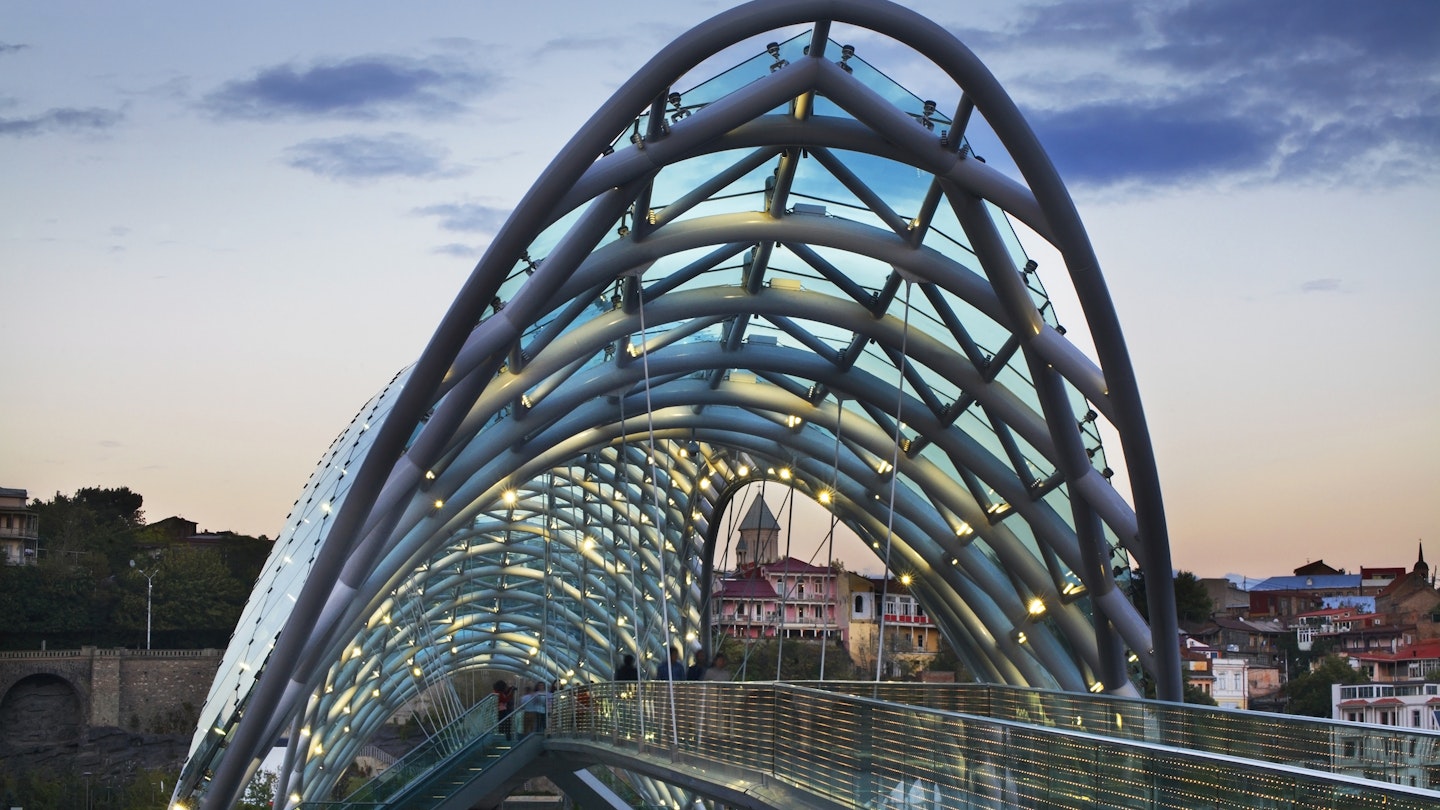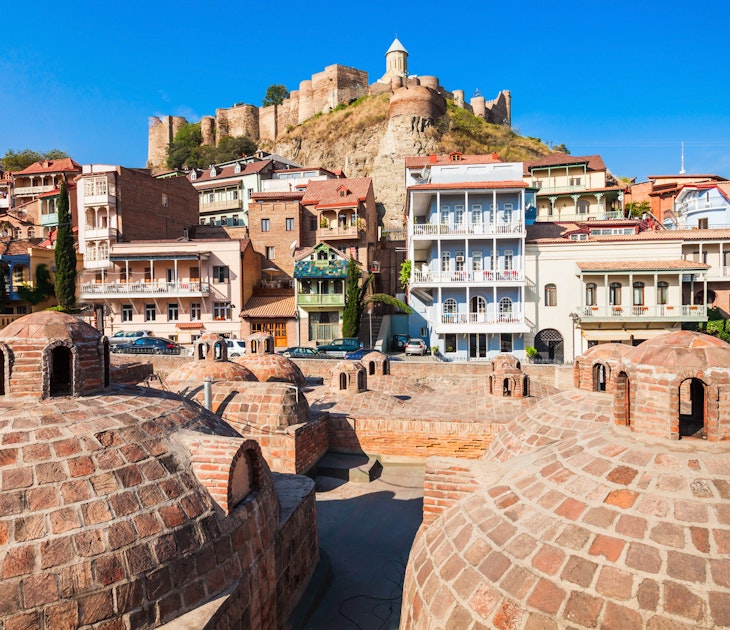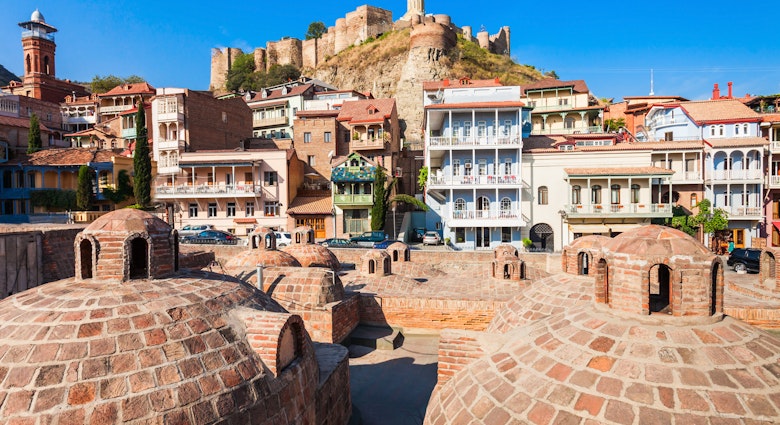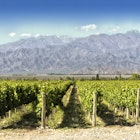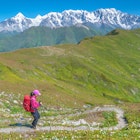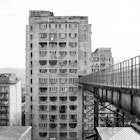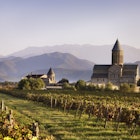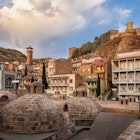An age-old Eurasian crossroads famous for its traditional hospitality and old winding streets, or a stylish hub of bold architecture, buzzing bars and a club culture that has gained labels like 'new Berlin'? Happily, Tbilisi is both: the unique vibe of the capital of Georgia springs in large measure from the way it melds tradition and multifarious eastern and western influences with an edgy, post-Soviet, countercultural streak.
Day One
Morning
Kick-start your day at the old-town branch of the bakery chain Entrée, then cross the cliff-girt Mtkvari River into Rike Park. Climb into the cable car that swings high over the old-town rooftops up to Narikala Fortress – an exhilarating ride that opens up sweeping panoramas of Tbilisi, laid out between the hills enclosing the Mtkvari valley.
Explore the remains of the fortress, which has kept watch over Tbilisi since the 4th century AD, then stroll back down into the old town to wander streets strung with a mix of handsomely renovated and still-evocatively-dilapidated buildings. Soak in the atmosphere of tradition-infused churches like the Georgian Orthodox Sioni Cathedral and Anchiskhati Basilica, both dating from the 6th century; and browse intriguing shops like Caucasian Carpets, with colourful rugs from the South Caucasus, Iran and Central Asia. Cafes galore line the old-town streets: at Cafe Leila, opposite the Anchiskhati, you can order vegetarian snacks with your coffee, tea or mint lemonade amid stucco decor inset with Persian-style paintings.
Check out the quirky, higgledy-piggledy clock tower outside the Gabriadze puppet theatre, then head south for a look at the Abanotubani, the domed, semi-subterranean sulphur baths whose springs gave the city its name (tbili is Georgian for warm). Nearby, bustling, bright Maspindzelo is the perfect place to introduce yourself to Georgia's unique cuisine, an often-spicy fusion of Middle Eastern, Russian, Persian and other influences with the bountiful produce of Georgia's fertile soil. Lunch here on tasty classics such as spicy khinkali dumplings, khachapuri cheese pies or mtsvadi shish kebabs.

Afternoon
Explore the east side of the city and some of the eye-catching contemporary buildings that have transformed Tbilisi's profile. The Peace Bridge, a wavy pedestrians-only glass-and-steel structure by Italian Michele De Lucchi, connects the old town to flower-filled Rike Park. Above rises the Presidential Palace (2009), with its classical portico surmounted by a large, egg-shaped, glass dome. Beyond there you reach the massive Tsminda Sameba (Holy Trinity) Cathedral, consecrated in 2004 – a modern expression of traditional Georgian church architectural forms, rising 84m to the top of the cross above its gold-covered dome. Holy Trinity is the maximum symbol of the post-Soviet revival of the Georgian Orthodox Church: its icon-decked interior, with black-gowned priests and headscarfed women bustling about, speaks eloquently about the power of this traditional institution.
Evening
Wine is a Georgian national passion and its unique vintages are at last gaining deserved international attention. Dig into the Georgian wine world at Vino Underground, a brick-vaulted basement in the fin-de-siècle Sololaki neighbourhood, with a huge array of traditionally-made natural wines to try. Move on to dinner from the inspired fusion kitchen of Cafe Littera, creating delectable 'nouveau Georgian' dishes from traditional ingredients in the elegant surrounds of the Writers' House - or even better, when the weather's right, in its romantic garden. (Reservations advisable, via Facebook.)
A good place to dive into the late-night Tbilisi club scene is Cafe-Gallery, a relaxed cafe that morphs as the night progresses into a dance party with a steady diet of minimal techno and house – open nightly and especially packed on Friday and Saturday nights. In the early hours of Saturday and Sunday you can head to Bassiani for the some of the most euphoric techno/house nights in Europe, in the classic setting of a disused swimming pool in the bowels of the Dinamo football stadium.

Day Two
Morning
Spend the morning exploring along Tbilisi's main central avenue, Rustaveli, laid out under Russian rule in the 19th century. Start on broad Tavisuplebis moedani (Freedom Sq), where the Fine Arts Museum is home to many of Georgia's most sacred and revered artworks in its priceless array of icons, crosses and jewellery. Head along Rustaveli to the modern, well-displayed Museum of Georgia, with diverse collections including fabulous pre-Christian gold adornments from Colchis (western Georgia). A little further along Rustaveli is the National Gallery, whose star attraction is the hall of canvases by Georgia's best-known artist, Niko Pirosmani (1862-1918). From here it's a short walk to the intriguing Dry Bridge Fleamarket, a sort of open book on Georgia's past and traditions, where you can find everything from shaggy shepherds' hats and Soviet memorabilia to accordions and elaborate daggers.
Cross the river by the Saarbrucken Bridge and make your way to Fabrika, a Soviet sewing factory converted into Tbilisi's No 1 creative/lifestyle hub, combining a stylish hostel with artists' studios, cafes, bars, a co-working space, quirky shops, exhibitions, music and frequent other events. Eat at Tone with its short but sweet international menu and fresh tone (clay-oven) Georgian bread, and check out Flying Painter for a sense of the Georgian chic that has the fashion world talking.

Afternoon
From Fabrika it's 1.5km north to the Desertirebis Bazari (Deserters' Market), Tbilisi's sprawling main food market, a fascinating wander where you can unearth almost every ingredient that goes into Georgia's unique cuisine, much of it fresh from the countryside: piles of round cheeses, mounds of spices, counters covered in walnuts, heaps of shiny fish, home-made sauces and pickles, and every kind of fruit and vegetable that's in season.
Now take a taxi back across the river and up to Chonkadze street, to ride the steep funicular railway up Mt Mtatsminda, the hill topped by a tall TV mast that you have undoubtedly already noticed. The vistas over the city are matchless, and at the top, the Funicular Complex has a good cafe, restaurant and bar.
Evening
It's an enjoyable walk down from the Funicular Complex towards the 19th-century Vere neighbourhood and the final style flourish of your visit. The focus here is on Rooms Hotel (opened 2014) and neighbouring Stamba Hotel (2018), both converted from large industrial spaces into stunning contemporary-cum-vintage havens of hospitality. If you're staying in either hotel, lucky you. Otherwise, wander through Rooms' semi-open-plan common areas and enjoy a classy cocktail in the courtyard-garden, or admire Stamba's jungle-style five-storey atrium and sip a reviver in its Chocolaterie coffee shop.
For a fitting finale to your stay, head for a lovingly prepared, home-style dinner at nearby Alubali. This is authentic traditional Georgian food emphasising fresh ingredients including local cheeses, herbs, salads, pastes, fish and meat stews. Hopefully there'll be a table free in the cosy garden-courtyard!

